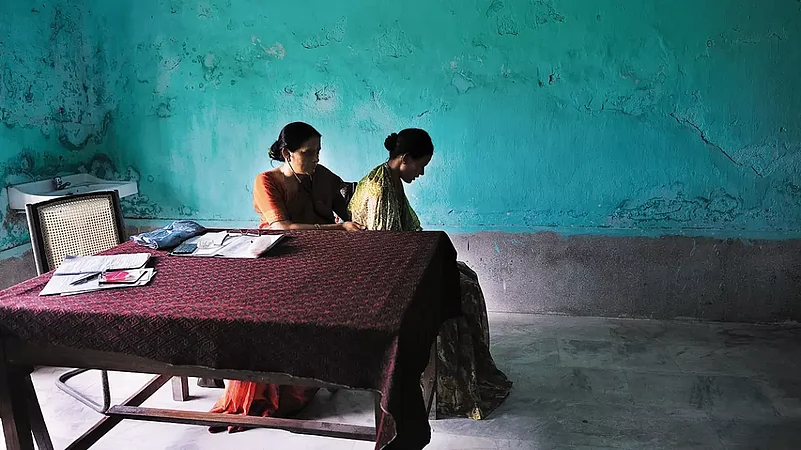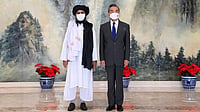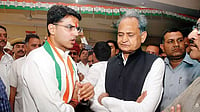On a dull and cloudy Friday morning, a couple stands outside an Aam Aadmi Mohalla Clinic, which offers free consultation, medicines, and diagnostics, in Okhla’s Zakir Nagar. Farhat Tarannum, 35, had visited the community clinic to undergo some lab tests that the facility conducts for free. Tarannum’s husband, Haroon Zakir, also ran an array of blood tests at the facility. The couple, like millions of other Indians, lost their jobs during the second wave of the pandemic and have been unable to find a stable, full-time job since. “All the savings,” says Tarannum, “are drying up and managing expenses is getting extremely difficult.”
“If these clinics did not exist in Delhi, we would never be able to afford even basic healthcare for ourselves,” says Zakir, adding, “Private labs charge you around Rs 500–700 for a basic test like thyriod, and even the cheapest private hospital gives you a doctor’s appointment for Rs 400.”
Advanced healthcare, says Tarannum, is beyond their reach because it is expensive and private hospitals skim money from patients, pushing them into poverty.
Last month, at least five states— Uttar Pradesh, Maharashtra, Karnataka, Gujarat, and Meghalaya— agreed to implement the government think tank Niti Ayog’s plan for district hospitals to be given over to private healthcare companies to manage attached medical colleges on a public-private-partnership (PPP) basis. The think tank had proposed the plan two years ago, and currently these five states are seeking bidders for this project.
Experts, casting an eye of doubt, have flagged the move, saying this is likely to pave the way for more privatisation of the healthcare sector in the country under the PPP model. With this model being charge-based, experts fear that the move will further impede access to basic healthcare for the impoverished, because it is the people who are not economically well off who often throng government hospitals and medical colleges for treatment.
Rijo M John, a health economist and consultant with the World Health Organisation (WHO), is of the opinion that this model is unfavourable for underprivileged citizens, especially if the “private” is overpowering the “public”. Speaking to Outlook, John says, “Rather than opting for and promoting this model, the government should have first ensured sufficient tertiary care facilities in the public sector itself.” According to him, the dearth of tertiary healthcare facilities at the district level leaves the ground open for private players to indulge in more profiteering. “This phenomenon, in turn, further pushes people into penury,” he adds.
Maya Das stands at the outpatients counter of the Gynaecology and Obstetrics Department of the Sir JJ Group of Hospitals in Byculla, Mumbai. She has been visiting the hospital for the past year, since she lost her job as a teacher in one of the upscale schools there. In the past, Das had always visited the gynaecologist at the swanky hospital located a kilometre away from her residence in Thane. Not anymore. The loss of her job during the pandemic and the month-long hospitalisation due to Covid, impacted her savings, leaving her in a financial emergency. Being a single woman with no immediate family, she has been trying to eke out a living with the available resources.
The decision to seek healthcare from a state-run hospital came after much thought. “After Covid, I have developed a gynaecological disorder that needs regular care. It is very expensive to go to the hospital I have always been to. I take a train to come to this hospital. It is cheaper as it is a government hospital,” she says.
The state- and civic-run hospitals in Mumbai are witnessing a never-before deluge of patients, who once held good jobs. With job losses and unemployment hitting the roof, the government and civic hospitals have become the go-to place for affordable healthcare.
In a recently published report, “Poverty and Shared Prosperity 2022: Correcting the Course”, the World Bank concluded that at least 5.6 crore Indians slipped into poverty in 2020 due to the pandemic.
Besides shattering and overwhelming India’s brittle healthcare system, the pandemic resulted in massive job losses across the country. A whopping 10 million Indians lost their jobs because of the second wave. A report by the Centre for Sustainable Employment at the Azim Premji University says that nearly 230 million individuals fell below the national minimum wage poverty line in India.
WHO reports suggest that expensive medical treatment pushes almost 100 million people into poverty each year, with low-income nations being the hardest hit. According to some estimates, there may be over 60 million people in India who are pushed into poverty owing to piling medical bills.
Experts believe that most of the expensive bills come from private hospital chains that are scattered across the country. The phenomenon has, however, not gone unnoticed.
In a first, the Competition Commission of India (CCI), the fair-trade watchdog, cracked its whip on some of the largest private hospital chains after a four-year-long investigation revealed that they abuse their dominance through exorbitant pricing of medical services and products in contravention of competition laws. These hospitals not only charge exorbitant prices for medical tests, X-rays, MRI and ultrasound scans, but also do not allow the use or purchase of consumables, medical devices, medicines and medical tests from outside, citing “ease of convenience” as a reason.
On July 12 this year, the watchdog sought an explanation from Apollo Hospitals, Max Healthcare, Fortis Healthcare, Sir Ganga Ram Hospital, Batra Hospital and St Stephen’s Hospital, among others. The CCI, say sources, will meet in November to weigh in on the responses of these hospitals and might impose on them a penalty of up to 10 per cent of the average turnover for the three preceding financial years.
Dr Soumyadeep Bhaumik, an international public health specialist, believes that private players have a monopoly over the healthcare sector owing to the lack of a sturdy primary healthcare system in the country. “In India, the dearth of primary healthcare facilities allows private hospital chains to monopolise the market and control the pricing,” says Dr Bhaumik, who works at the George Institute for Global Health, Delhi. “Nonetheless,” he adds, “privatisation of the health sector in developing nations like ours will only lead to widening the gap between the poor and the rich.”
Since expensive healthcare largely excludes the poorer sections of society by and large, more people become prone to falling sick. This will potentially lead to a rise in the prices of insurance premiums as well. He adds, “This vicious circle keeps self-perpetuating unless we nip the evil in the bud. The answer lies in developing a strong public primary healthcare system with a focus on preventive and promotive health that includes access to nutrition, food security, proper sanitation, and so on.”
Dr Bhaumik believes that in developing nations, healthcare must neither be aggressively privatised nor left to the forces of the free market. Health, he says, is not like a costly television set that a consumer can buy after three months. “Accessing healthcare is an exigency, and uncontrolled and unregulated privatisation leads to the perpetuation of poverty.”
He further says, “The PPP model for district hospitals and medical colleges that is recently being talked about has a potential to allow private players to exercise a certain hegemony in determining prices. It can be beneficial also, but at this time we cannot rule out its potential hazards either.”
Government initiatives like the Ayushman Bharat Pradhan Mantri Jan Arogya Yojana (PMJAY) and the Mukhyamantri Amrutam Yojana (MAY) were rolled out to make healthcare accessible to the weaker sections of society. However, following the accumulation of insurance claims and the termination of contracts with Oriental Insurance and Bajaj Allianz General Insurance Company, PMJAY and MAY schemes in states like Gujarat have suffered. Until the backlog is addressed, hospitals are refusing to take in beneficiaries under these schemes.
“Since more and more people are falling sick, cases will pile up, and these insurance schemes are likely to fall into bottlenecks,” a health expert tells Outlook. He further adds that “In India, the private insurance culture is not as widespread as in the US or the UK, and considering that government schemes are not functioning very smoothly, the privatisation in healthcare will only lead to massive inequality, rampant poverty, and sheer disaster.”
It might be debatable how aggressively India is going towards privatisation of healthcare, but as per a National Health Accounts Estimates report, released on September 12, 2022, the Union government’s expenditure on healthcare went down to 1.28 per cent of the Gross Domestic Product (GDP) in 2018–19 from the previous year’s figure of 1.35 per cent. Moreover, total health expenditure went down from 3.9 per cent of the GDP in 2013–14 to 3.2 per cent in 2018–19. Countries like the US spend 19.7 per cent of the GDP on healthcare, a figure that is far more than India’s spending.
Although India’s out-of-pocket expenditure has fallen to 48.21 per cent in 2018–19 from 69.4 per cent in 2004–05, it remains much higher than the global average of 18.1 per cent, according to the World Bank.
As health expenditure keeps impoverishing some 60 million Indians annually, Tarannum sums up the doom of privatisation by saying, “Hindustan main har doosra insaan gareeb hai, aur private mai gareebu ki koi jagah nahi (Every second citizen in India is poor and there is no place for the poor in the private sector).”
(This appeared in the print edition as "Big Bucks Business")
(With inputs from Haima Deshpande in Mumbai)


























